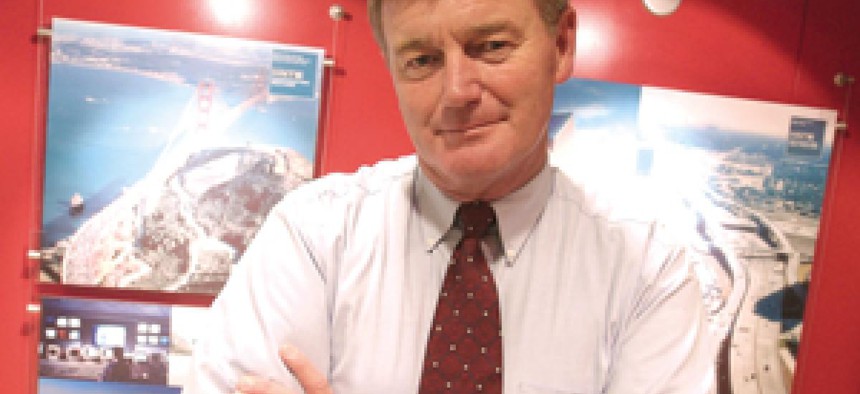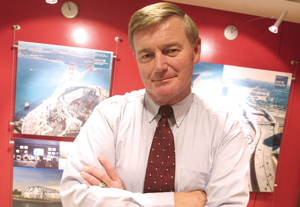Survival Guide: Ret. Lt. Gen. Robert Flowers, former chief of engineers and commanding general of the Army Corps of Engineers

As the corps' chief of engineers, Robert Flowers learned better than most that in a post-9/11 world, infrastructure protection is a national priority.
Although best known for building canals and other parts of the nation's infrastructure, the Army Corps of Engineers has been the Defense Department's anti-terrorist expert center since before Sept. 11. Its classified tools have been applied to bases and embassies around the world to help keep Americans safe.As the corps' chief of engineers, Robert Flowers learned better than most that in a post-9/11 world, infrastructure protection is a national priority. Not only must government buildings be protected, but bridges, roads and waterways must also be redesigned with security as a main component.After more than 35 years in the corps, Flowers joined HNTB Federal Services Corp., an infrastructure engineering firm in Arlington, Va. As chief executive officer, Flowers will lead the company in helping the government protect critical facilities. He also will be looking for technology partners to do the job right.Less than two weeks on the job, Flowers sat down with Staff Writer Brad Grimes to talk about lessons learned in the corps, and opportunities to partner with systems integrators. What did the corps learn from industry about applying technology to infrastructure projects?The thing I saw emerging was the ability to operate virtually. Companies would digitize everything and, say, begin work on the East Coast of the United States and have a project continuously worked on as it made its way around the world. So in a very short period of time, results could be achieved, virtual teams could be assembled. That was something we were looking to replicate in the Corps of Engineers. For example, if you were doing work in Iraq or Afghanistan, you would have the ability to do a lot of the work in an office someplace else in the world.How will your work in the corps influence your priorities in the private sector? One of the passions that I had was the state of U.S. infrastructure. If you look at recent studies, it will take an investment of $1.6 trillion over the next five years to fix things. Nations that don't have good infrastructure can't be protected or prosperous. When you talk about spending $1.6 trillion on infrastructure, what infrastructure are you talking about? Roads, bridges, dams, sewers, inland waterways. And these aren't problems that individual cities or counties can solve on their own. It's going to take some regional or even national solutions to address them. How will you apply IT to those solutions?Flowers: There are a lot of companies and organizations in government that can do visualization, where they can fly through a city or navigate a sewer system virtually. We've taken architecture data and design data and melded it with the visualization capability, so as you're working at designing or re-doing something, you can look at it from a number of perspectives and bring in expertise before you even build it. Do you do this today? Nascar is one of our clients. They can bring in a driver to drive on a yet-to-be-built raceway, make changes in the raceway and have him drive it again to build the best facility. When you think of securing large buildings, part of your design has to allow you to evacuate people very quickly. So you can run disaster scenarios using the actual architecture and design data to make sure your design works. Or you can simulate attacks against a facility to figure out where to put sensors and what type you need. How has the job of engineers changed, and how can they work with technology companies to build a better infrastructure? When you designed a bridge in the past, you'd design for the live load, the dead load, seismic consideration, but I don't think a whole lot of thought was given to having that bridge attacked by an explosive device. So there's a need to do that. With information technology and the tools we're developing, you can have a great synergy that will help improve security in ways we can't even envision yet, through better use of sensors and cameras. And you can do it all before installation of the facility. ... HNTB is very comfortable partnering to get the expertise it needs. Would that partnering extend to systems integrators? I think it would be wonderful to see the crosscut of the type of technologies they have with the kind of technologies we've developed. It would be very worthwhile to see that part of the industry mesh with this part of the industry for the betterment of future security.

WT:
Flowers:
WT:
Flowers:
WT:
Flowers:
WT:
WT:
Flowers:
WT:
Flowers:
WT:
Flowers:

Ret. Lt. Gen. Robert Flowers
David S. Spence
WT:
Flowers:
WT:
Flowers:
WT:
Flowers:
WT:
WT:
Flowers:
WT:
Flowers:
WT:
Flowers: